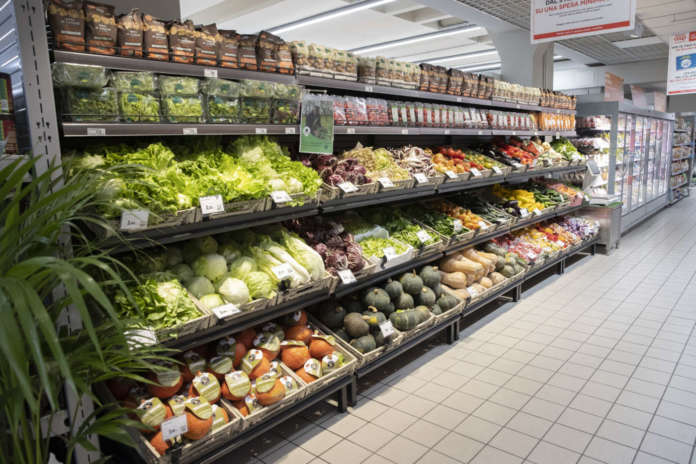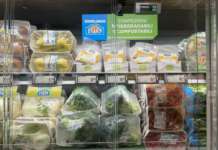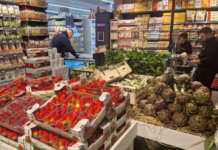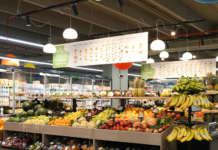La società di ricerca e consulenza Agroter, specializzata sui freschissimi, ha realizzato un’analisi sulla percezione del reparto ortofrutta. Dalla ricerca, che ha coinvolto, a livello nazionale, i 3.000 responsabili d’acquisto del Monitor Ortofrutta di Agroter, sono emersi i “migliori carrelli ortofrutta”. I 3.000 responsabili d’acquisto sono stati selezionati nel panel Toluna, con una prevalenza di donne (75%) e con un’omogenea distribuzione geografica da nord a sud.
Si tratta di una ricerca notevole, realizzata in collaborazione con Toluna, piattaforma specializzata in ricerche di mercato e consumer insight quali-quantitativi, e con il supporto di Unaproa, l’Unione nazionale tra le organizzazioni dei produttori ortofrutticoli, agrumari e di frutta in guscio. Si tratta di un contest che completa il Monitor Ortofrutta di Agroter, i cui risultati sono stati presentati nei giorni scorsi a Fico Bologna, in occasione della 24esima edizione dell’evento Speciale Frutta & Verdura 2023, organizzato da Mark Up e Italiafruit News.
“La ricerca -sottolinea Roberto Della Casa, responsabile scientifico del Monitor Ortofrutta di Agroter– offre un quadro inedito del reparto ortofrutta e delle sue declinazioni. Per questo riteniamo che si possa tradurre in un documento molto utile sia per i retailer sia per i produttori, al fine di meglio orientare e rendere più mirate le loro strategie di sviluppo di un reparto che si conferma quello di gran lunga più importante nella scelta del supermercato di fiducia. Basti pensare che, secondo le nostre rilevazioni di settembre 2023, è indicato dal 44% degli intervistati, contro il 23% della macelleria, il 9% della gastronomia, l’8% della pescheria, il 6% della drogheria alimentare e il 4% della panetteria”.
I risultati della ricerca
Miglior insegna presente su tutto il territorio nazionale è risultata Coop, seguita da Conad e Lidl. Invece, la segmentazione a livello macro-territoriale ha visto prevalere gli Esselunga Superstore nel Nord-Ovest, Esselunga nel Nord-Est, ancora Coop nel Centro e Sardegna e, infine, i Conad Superstore nel Sud e Sicilia.
Lidl primeggia, precedendo Md ed Eurospin, nella categoria speciale “Supermercati essenziali”, che – a differenza delle altre – fa un approfondimento specifico su un format di recente ingresso nel nostro paese, che sta progressivamente sostituendo il tradizionale discount. Questa scelta nasce dal fatto che il 71% dei consumatori intervistati che fanno la spesa in un discount, lo definiscono un supermercato. Il miglior carrello “assoluto” è invece quello dell’insegna campana Sole365, seguita dalla piemontese Mercatò e da Dok Supermercati.
I criteri di valutazione
Sulla base di cosa si giudicano un supermercato e la sua offerta? Tra i criteri, l’ortofrutta gioca un ruolo sempre più centrale, tanto che il 96% degli italiani si reca in almeno due negozi per soddisfare le proprie necessità. Oltre il 60% visita addirittura tre o più punti vendita, a riprova di quanto sia esigente per questo reparto, e fa acquisti 2-3 volte alla settimana, stimolando una crescente concorrenza tra insegne.
Risposte e preferenze
L’indagine registra quanto segue: il 62% degli italiani si reca nei negozi a libero servizio come luogo d’acquisto principale per frutta e verdura, mentre il 38% si rivolge allo specializzato. Il libero servizio scende al 25% se lo si considera come destinazione d’acquisto esclusiva, mentre raggiunge l’86% degli intervistati se lo si prende in considerazione sia come luogo d’acquisto primario che secondario.
Emerge inoltre che il normal trade, ossia fruttivendoli, ambulanti, mercati rionali, ha determinato o condizionato le scelte dei retailer, anche in maniera indiretta. Per esempio, l’assortimento pesa più al Nord, dove c’è maggior competitività orizzontale tra le insegne, mentre al Sud, dove l’offerta è più “basic” e prevale il negozio tradizionale, scelto dal 50% degli intervistati, si pone maggiore attenzione sul servizio.
Ma ci sono anche altri criteri che determinano le scelte dei clienti: al primo posto come valori irrinunciabili ci sono pulizia e ordine, seguiti da freschezza e stagionalità e ancora da convenienza, assortimento, prodotti locali, assenza di rotture di stock. Solo nelle ultime posizioni del ranking compaiono esposizione e comunicazione, novità, servizio e assistenza ai clienti. Localismi e nuovi lanci non sembrano essere poi così determinanti.
The best fruit and vegetable baskets in Italy
This research analyses consumers’ purchasing preferences and evaluation criteria, and traces the substantial differences between Northern and Southern Italy
Fruits and vegetable play a leading role in consumer spending choices. They are increasingly central and often act as a deciding factor in the selection of a store. This is what emerges from a research conducted by Agroter, a research and consultancy company specializing in very fresh products, carried out in partnership with Toluna, operational market research platform, and with the support of Unaproa (National Union of fruit and vegetable, citrus fruit and nut producer organisations). Roberto Della Casa, scientific manager of Agroter’s Fruit and Vegetable Monitor, explained: ‘This research offers an unprecedented picture of the fruit and vegetable department and its variations. For this reason, we believe that it can be translated into a very useful document for both retailers and producers, to orient their development strategies and make them more targeted for a department that is confirmed as by far the most important when choosing a trusted supermarket. Suffice it to say that, according to the data we have collected from September 2023, it is indicated by 44% of those interviewed, compared to 23% who indicated the butcher’s shop, 9% the delicatessen, 8% the fishmonger’s shop, 6% the food grocery shop, and 4% the bakery’.
The research involved, at a national level, the 3,000 purchasing managers of Agroter’s Fruit and Vegetable Monitor, selected with a prevalence of women (75%) and with a homogeneous geographical distribution from north to south. The ‘best fruit and vegetable baskets’ also emerge from the research. The best brand present throughout the national territory is Coop (followed by Conad and Lidl), while the segmentation at a macro-territorial level saw the prevalence of Esselunga Superstores in the North-West, Esselunga in the North-East, again Coop in the Centre and Sardinia and finally, Conad Superstores in the South and Sicily.
Lidl is on the podium, ahead of Md and Eurospin, in the special essential Supermarkets category. And this is already an element to reflect on: in fact, 71% of consumers interviewed, who shop in discount stores, do not perceive it as such, but tend to associate it with a traditional supermarket. In the case of Lidl, the figure reaches 88%.
The best ‘absolute’ shopping basket is that of the brand Sole365 in Campania (Ap Commerciale-Selex), followed by Mercatò and Dok Supermercati (Selex). These brands are not present throughout the Country and, despite this, they have received the best ratings. In terms of purchasing preferences, the research found that consumers are much more demanding for fruit and vegetables: 96% of Italians go to at least two shops to satisfy their needs, while over 60% even visit three or more stores, and make purchases 2-3 times a week, stimulating growing competition between retailers.
Furthermore, 62% of Italians go to self-service shops as the main place to purchase fruits and vegetable, while 38% go to specialized shops. Self-service shops drop to 25% if they are considered as exclusive purchasing destinations, while reach 86% of those interviewed if they are considered as both a primary and secondary place of purchase.
Between north and south, then, there are substantial differences that also influence the choices of retailers: above all the greater presence in Southern Italy of greengrocers, street vendors, and local markets, which implies the need to strengthen the service within large-scale supermarkets, where the need for a direct relationship with sales staff is felt more clearly. In the north, however, horizontal competition between brands is greater.
As regards the criteria that guide consumers’ choice: in first place we find cleanliness and order, followed by freshness and seasonality, and immediately after affordability, assortment, local products, absence of stock outs. Display and communication, news, service and customer assistance appear only in the last positions of the ranking. The absence of localism and new launches stands out.










